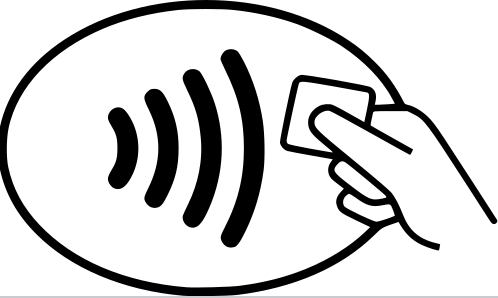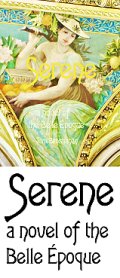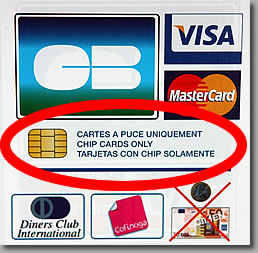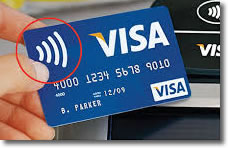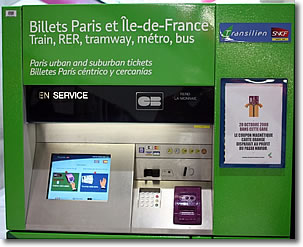 |
RFID & Chip+PIN Debit/Credit Cards | |
|
If your credit or debit card has a magnetic stripe, but not a computer
chip, or RFID symbol, you
will have trouble using it in Paris and the
rest of France. In fact, you may not be able to use
it at all. But there are solutions to this problem.
|
||
|
|
|
Use Your Card or Phone!These days most debit and credit cards have computer chips and NFC (Near-Field Communications) technology, meaning that you can insert them in, or tap them on, payment machines to pay. If you have a smartphone with Apple Pay or Google Pay, that's an even more secure way to pay, and widely accepted. We pay for virtually everything on our trips in France on our Wise debit cards via Apple Pay: hotels, trains, meals, shopping—even bus fares and simple cups of coffee. (See below.) This system is used everywhere in France, for virtually everything. If your card has only the old magnetic strip to swipe, it may be of limited use on your trip to France.You may not be able to use it at all, even in online transactions. Chip+PIN CardsTo deter credit and debit card fraud, European banks, including in France, use the EMV Smart Card Payment System which requires credit and debit cards with computer chips in them (cartes à puce in French). When used for a purchase, the card is inserted into, or tapped on, a merchant device card reader (often a handheld device brought to you), the merchant (say, a waiter in a restaurant) enters the business code and the amount of the charge, then hands the device to you. You press the number keys for your 4-digit PIN (Personal Identification Number), the charge is recorded, the device prints a receipt for you, your card is removed and returned to you, and the transaction is over. It's quick, easy and secure. RFID/NFC Cards
You may already have, and use, a Radio Frequency Identity (RFID) card: city transit passes for bus, metro, etc., such as Paris's Navigo, are RFID cards, as are any cards that you just touch or wave at a sensor: you just put the card on or near a sensor, the card and the sensor exchange information, and you're on your way. NFC (Near-Field Communication) is a more secure subset of RFID. Look for this symbol on the payment machine:
Touch your card or smartphone to the symbol shown above to make your payment. RFID cards have chips within them, but may or may not have electrical contacts on the surface of the card, so they may not work on all EMV chip card system terminals. Chip+Signature: Obsolete!With Chip+Signature cards, your card has a chip in it, but you sign your signature on the device or on a paper receipt, as you did with the old magnetic stripe cards. With this system, you are usually not liable for fraudulent use of your card. Chip+Signature can be used in some establishments in France, such as restaurants. When the server brings the handheld credit card device to your table and asks for your card, simply say Signer (SEEN-yay), meaning "Signature," instead of PIN. The server will generate a paper receipt for you to sign. But in other situations, such as buying things from a machine (Métro and train tickets, for example), a PIN is required. You won't be able to use the machine without one. So... Get a PIN!From some companies in the USA, you can request a PIN to go with your Chip+Signature card, making it a Chip+PIN card as well. With a new card, you may have to make your first transaction with a person (cashier) and use your signature, but after that your PIN should be active, and you should be able to use it as a Chip+PIN card in France. Apple Pay: Easy!We use Apple Pay to pay for virtually everything when we travel in France: You register your credit/debit cards in your smartphone. When the time comes to pay, you set up your phone to pay, hold it near the payment device, hear a chime, and payment is made. Apple Pay is accepted at 99% of the sellers we use: cafés, restaurants, shops, transport ticket machines, some highway toll booths, even at some open-air markets. Google Pay should work as well, as may any other such system based on the credit/debit cards you have. With this sort of system, your card number is not revealed to the seller—the system merely provides a one-time authorization code. There's less chance that your card number will "go astray" and be used illegitimately. International Exchange AppsIf you travel internationally frequently, consider using a service such as Wise. We go to France several times per year to update FranceTravelPlanner.com, so we regularly need to make payments in euros. To avoid bad exchange rates and excessive fees, we use a service called Wise (formerly TransferWise), which offers international electronic banking and currency exchange at advantageous rates. We set up a Wise account, transfer US dollars (or another currency) to it from our bank, then convert the dollars to euros as we need them via the Wise smartphone app or website. Transfers and payments take place immediately (unlike banks, which may take days). Fees are low, or non-existent. We also ordered a Wise Debit Card, which can be used like any bank debit card to pay for things or to obtain cash from an ATM. We save money because Wise debits our account in the currency of the purchase, so there's no additional currency exchange commission or fee paid on the transaction. There are other, similar services available. We recommend this one because we researched it, we've used it for years, and we find it reliable and advantageous. More... What Else?—Look into smartphone payment methods valid in France, and how to avoid currency exchange ripoffs. —Ask your bank about Chip+PIN debit and credit cards, and obtain one if possible. —Use a chip+PIN cash/ATM card from your home bank to withdraw euros from cash machines (retrait, distributeur des billets) in France—if it works. —Inform your bank that you will be using your card abroad, in France, and that charges and cash withdrawals made with the card should be approved.
|
|
RFID + Chip Card. Apple Pay, Google Pay and some other contactless smartphone payment systems are also widely used in France, and allow you to pay quickly, easily, and more securely. Euro Exchange Rate:
Hotel & Apartment Search Map:
|



